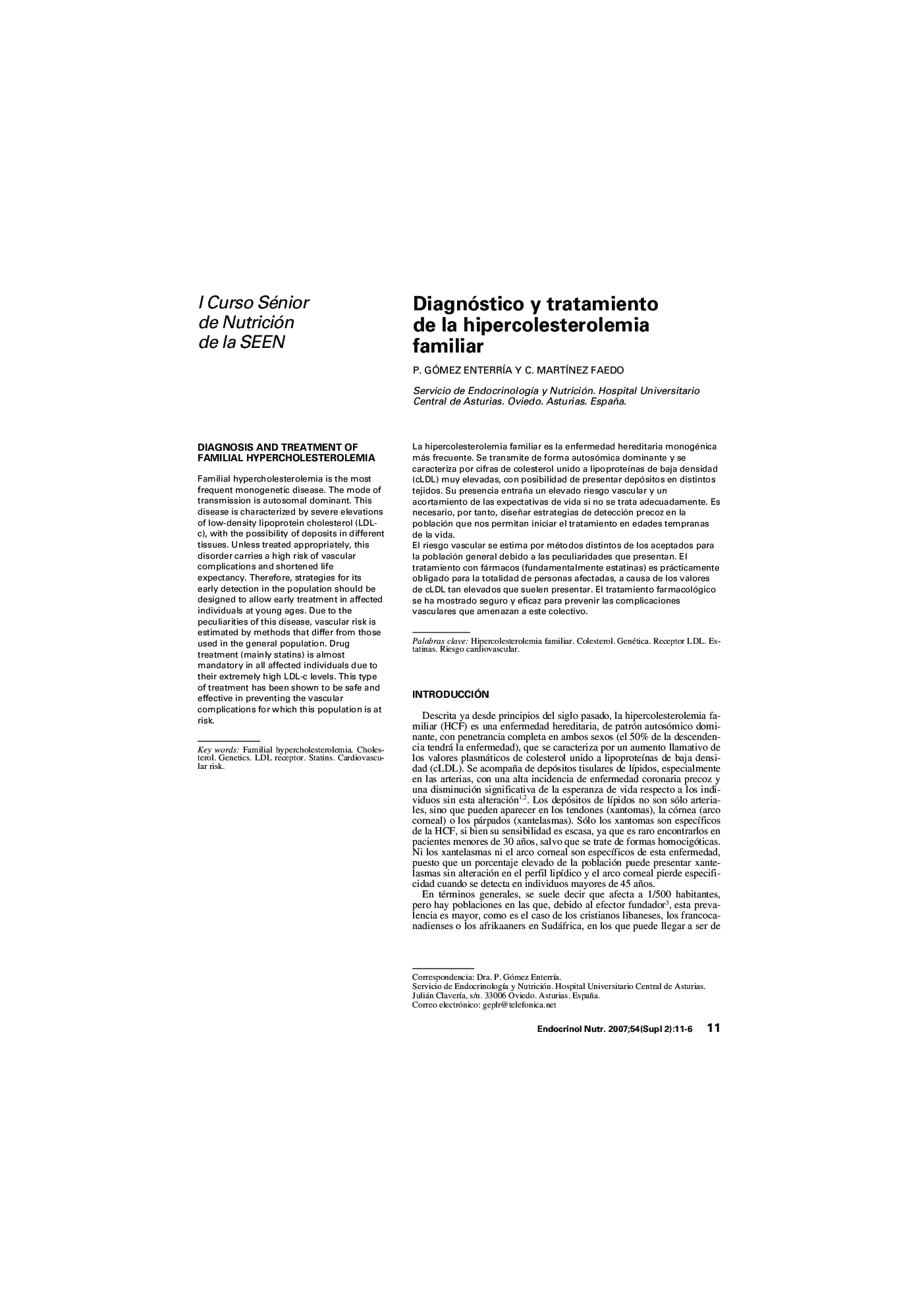| Article ID | Journal | Published Year | Pages | File Type |
|---|---|---|---|---|
| 2774570 | Endocrinología y Nutrición | 2007 | 6 Pages |
Abstract
Familial hypercholesterolemia is the most frequent monogenetic disease. The mode of transmission is autosomal dominant. This disease is characterized by severe elevations of low-density lipoprotein cholesterol (LDL-c), with the possibility of deposits in different tissues. Unless treated appropriately, this disorder carries a high risk of vascular complications and shortened life expectancy. Therefore, strategies for its early detection in the population should be designed to allow early treatment in affected individuals at young ages. Due to the peculiarities of this disease, vascular risk is estimated by methods that differ from those used in the general population. Drug treatment (mainly statins) is almost mandatory in all affected individuals due to their extremely high LDL-c levels. This type of treatment has been shown to be safe and effective in preventing the vascular complications for which this population is at risk.
Keywords
Related Topics
Life Sciences
Biochemistry, Genetics and Molecular Biology
Clinical Biochemistry
Authors
P. Gómez EnterrÃa, C. MartÃnez Faedo,
